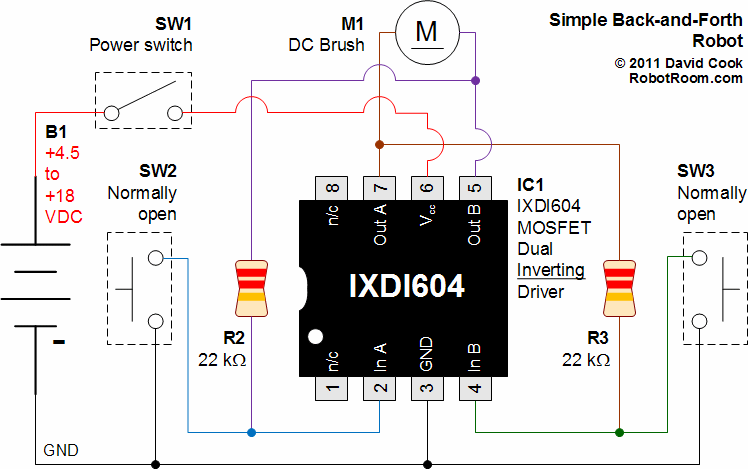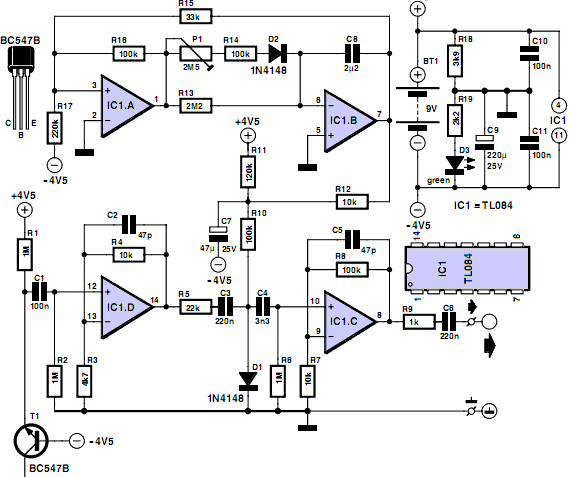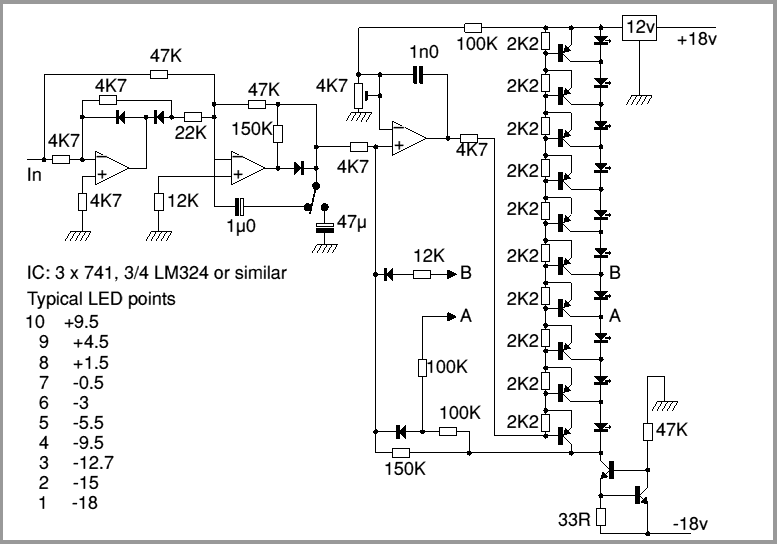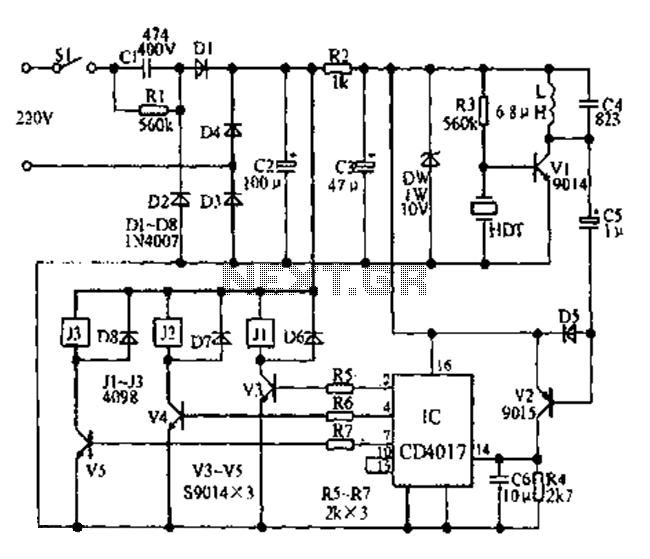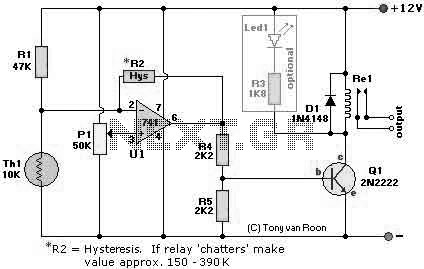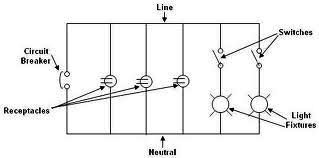
Audio/Video to UHF TV Signal Converter (Modulator) circuit diagram
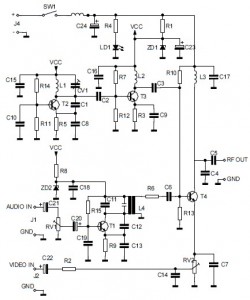
This is the circuit diagram of an audio/video modulator. The circuit converts audio and video signals into a UHF TV signal. It is designed to connect a video signal originating from a camera or other video source to a standard TV set. The audio and video signals are transformed into a UHF TV signal so that they can be received through the TV antenna input. The circuit kit for this audio/video modulator is available for purchase at electronickits.com. A complete kit, including the PCB board and components, can be obtained from that site.
The audio/video modulator circuit is engineered to facilitate the transmission of video and audio signals over UHF frequencies, enabling compatibility with conventional television sets. The primary function of this circuit is to take composite video signals, often provided by cameras or other video sources, and modulate them into a format suitable for UHF transmission.
The circuit typically includes several key components: a video input stage, an audio input stage, a modulator, and a power supply. The video input stage receives the composite video signal, which is then processed to ensure it meets the necessary electrical specifications for modulation. Similarly, the audio input stage handles the audio signal, preparing it for integration with the video signal.
The modulation process is crucial as it combines both audio and video signals into a single UHF signal. This is often achieved using a frequency modulation (FM) technique for the audio component and an amplitude modulation (AM) or frequency modulation for the video component. The resulting UHF signal can then be transmitted through the antenna input of a television.
The circuit design may also incorporate additional features such as signal amplification to enhance the output signal strength, filters to minimize interference, and connectors for easy integration with various audio and video sources. The availability of a complete kit, including a printed circuit board (PCB) and necessary components, simplifies the assembly process for users, allowing for straightforward construction and deployment of the modulator circuit. This makes it an accessible solution for those looking to connect non-standard video sources to traditional television systems.This is the circuit diagram of audio/video modulator. The circuit will convert an audio and video signal into a UHF TV signal. It`s desired to connect a video signal originating from a camera or other video source to a normal TV set. The audio and video signal is converted into a UHF TV signal so that the signal can be received through the TV ante
nna input. The circuit kit of this audio/video modulator available to buy at electronickits. com. You may buy the complete kit of this circuit (PCB board and the components) there. 🔗 External reference
The audio/video modulator circuit is engineered to facilitate the transmission of video and audio signals over UHF frequencies, enabling compatibility with conventional television sets. The primary function of this circuit is to take composite video signals, often provided by cameras or other video sources, and modulate them into a format suitable for UHF transmission.
The circuit typically includes several key components: a video input stage, an audio input stage, a modulator, and a power supply. The video input stage receives the composite video signal, which is then processed to ensure it meets the necessary electrical specifications for modulation. Similarly, the audio input stage handles the audio signal, preparing it for integration with the video signal.
The modulation process is crucial as it combines both audio and video signals into a single UHF signal. This is often achieved using a frequency modulation (FM) technique for the audio component and an amplitude modulation (AM) or frequency modulation for the video component. The resulting UHF signal can then be transmitted through the antenna input of a television.
The circuit design may also incorporate additional features such as signal amplification to enhance the output signal strength, filters to minimize interference, and connectors for easy integration with various audio and video sources. The availability of a complete kit, including a printed circuit board (PCB) and necessary components, simplifies the assembly process for users, allowing for straightforward construction and deployment of the modulator circuit. This makes it an accessible solution for those looking to connect non-standard video sources to traditional television systems.This is the circuit diagram of audio/video modulator. The circuit will convert an audio and video signal into a UHF TV signal. It`s desired to connect a video signal originating from a camera or other video source to a normal TV set. The audio and video signal is converted into a UHF TV signal so that the signal can be received through the TV ante
nna input. The circuit kit of this audio/video modulator available to buy at electronickits. com. You may buy the complete kit of this circuit (PCB board and the components) there. 🔗 External reference
